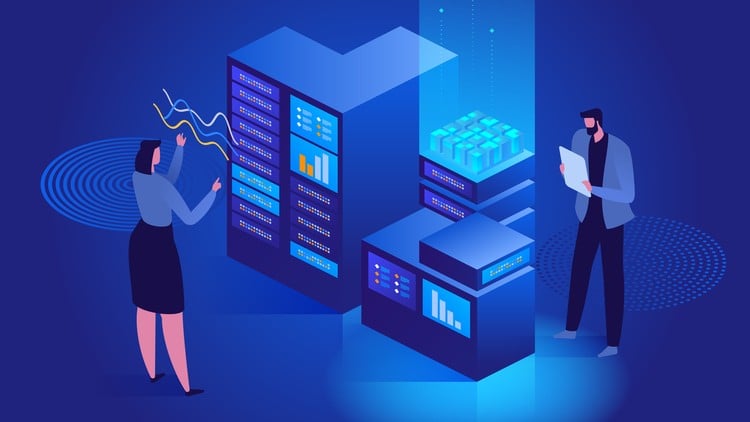
Master the core concepts, architecture, and real-world use cases of Edge Computing to future-proof your tech career
⏱️ Length: 51 total minutes
⭐ 4.29/5 rating
👥 5,300 students
🔄 July 2025 update
Add-On Information:
Note➛ Make sure your 𝐔𝐝𝐞𝐦𝐲 cart has only this course you're going to enroll it now, Remove all other courses from the 𝐔𝐝𝐞𝐦𝐲 cart before Enrolling!
- Course Overview
- This introductory course explores Edge Computing as a pivotal paradigm shift, driven by the need to mitigate latency, conserve bandwidth, and enhance real-time decision-making in distributed environments. It extends traditional cloud paradigms.
- The curriculum meticulously breaks down core components of an edge ecosystem: diverse edge devices, intelligent gateways, local processing units, and orchestration layers. Understanding these is essential for scalable solutions.
- A significant portion explains nuanced distinctions in data flow, processing, and storage strategies between Edge Computing and traditional centralized models. Learn why certain operations are best performed at the edge for efficiency and security.
- The course touches upon emerging trends and the compelling future outlook of Edge Computing, exploring its symbiotic relationship with 5G, AI/ML inference at the edge, and the Internet of Things (IoT).
- Requirements / Prerequisites
- Participants should possess a foundational understanding of general cloud computing concepts (IaaS, PaaS, SaaS) to contextualize edge paradigms effectively.
- A working knowledge of basic networking fundamentals, including IP addressing, latency, and bandwidth considerations, is recommended for efficient edge deployments.
- General familiarity with IT infrastructure components like servers, storage systems, and virtualization technologies will be beneficial. No prior edge experience is required, just keen interest.
- Skills Covered / Tools Used
- Infrastructure Analysis: Develop critical analytical skills for assessing infrastructure requirements tailored for various edge computing deployments, considering unique constraints.
- Network Strategy: Learn to evaluate diverse connectivity options and intricate network considerations crucial for establishing reliable distributed nodes, addressing edge limitations.
- Edge Security: Understand complex data governance policies and heightened security challenges inherent to operating computational resources at the edge, fostering secure architectures.
- Platform Awareness: Gain conceptual overview of popular edge platforms such as AWS IoT Greengrass, Azure IoT Edge, and Google Cloud IoT Core, understanding their capabilities.
- Containerization Concepts: Explore the foundational role of containerization technologies (Docker, Kubernetes) and lightweight messaging protocols (MQTT) in designing flexible edge architectures.
- Application Suitability: Acquire the ability to identify suitable applications and workloads that benefit most from edge execution, discerning when an edge approach delivers superior performance.
- Benefits / Outcomes
- Enhanced Vocabulary: Acquire a robust vocabulary and conceptual framework to confidently discuss, analyze, and strategically contribute to edge computing projects.
- Strategic Insight: Enhance your ability to articulate strategic advantages and potential trade-offs of implementing edge computing solutions, aligning recommendations with organizational goals.
- Opportunity Identification: Improve your readiness to identify and capitalize on opportunities for leveraging edge computing to optimize existing IT infrastructure and drive new innovations.
- Career Growth: Expand career prospects in rapidly evolving, high-demand fields like IoT architecture, AI/ML engineering for edge devices, and 5G infrastructure development.
- Informed Decisions: Make well-reasoned recommendations on edge adoption, considering technical feasibility, business impact, and future scalability for your organization.
- Future Preparedness: Future-proof your professional trajectory by adapting to shifts in distributed systems and demonstrating foresight in a dynamic tech landscape.
- PROS
- Provides a high-level, comprehensive overview for IT professionals, ideal for a strategic introduction.
- Focuses on strategic implications and business value, enabling informed decision-making and career advancement.
- Offers practical understanding of how Edge Computing integrates with and differentiates from existing cloud models.
- Accessible course design makes complex topics understandable for a broad audience.
- CONS
- The 51-minute duration provides a superficial introduction, limiting technical depth or hands-on application.
Learning Tracks: English,IT & Software,Operating Systems & Servers
Found It Free? Share It Fast!